


INTRODUCTION
Bird Watching or “Birding” as this fascinating hobby or pastime is now called, is fast gaining popularity. This is possibly due to a greater awareness of these avian wonders being created by articles in magazines and newspapers as well as the availability of a wide variety of beautifully illustrated books to choose from. Furthermore, a range of high quality optics such as binoculars (a.k.a. bins) and spotting scopes designed and made suitable for birding, are now obtainable, thus enabling even the casual birder to enjoy clear views of what would otherwise appear to the naked eye as a mere dark or indistinct blob.
Birding is a relaxing hobby. To many who have had a stressful week, it is indeed a method of unwinding, just to be able to wander off to a lake, tank (man- made water body) marsh or patch of forest, bins in hand, and view the avian beauties around.
In Sri Lanka, we are fortunate in that even close to a city or town, there is a marsh, lake, tank or small patch of forest where many birds which may not be rare but are nevertheless interesting, could be observed. Well wooded home gardens and those which contain fruiting trees are also good birding sites.
Paddy fields contain birds such as Little, Median and Cattle Egrets, Openbill Storks, and Grey and Purple Herons all busily grubbing and probing the insect and aquatic life that abounds in these fields.
Marshes and tanks attract White-breasted Waterhen, Purple Coot, Common Moorhen, Black-winged Stilts, Lesser Whistling Teal, Cotton Teal and Little Grebe.
In the surrounding reeds, one would encounter White-browed and Ashy Prinias, while Spotted, Black-headed and White-backed Munias could be seen tearing off skeins of reeds for their nests.
The diminutive Common Kingfisher perched patiently by the water’s edge and the Pied Kingfisher gracefully hovering above the water, are two species of kingfishers associated with water while the White-breasted Kingfisher’s domain is much larger as it preys not only on aquatic life but on insects and lizards found in gardens. The colourful Stork-billed Kingfisher is a species of kingfisher that has been observed close to artificial ponds in gardens in addition to tanks, lakes and marshes.
Frequent visitors to wooded home gardens are the Red-backed Woodpecker, Common Iora, Brown-headed Barbet, the endemic Ceylon Small Barbet and the beautiful Black-headed Oriole to name a few.
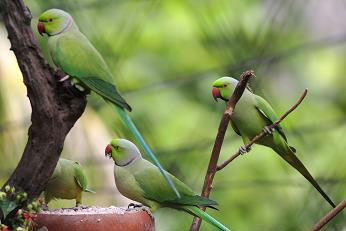 Birding could be pursued from your home even in the heart of the city. If you scatter some raw rice on a bird table or along your boundary wall, you will almost immediately find Rose-ringed Parakeets visiting you. House Sparrows will soon follow and become regular visitors. If you put up a nesting box or earthenware pot, they will start to nest.
Birding could be pursued from your home even in the heart of the city. If you scatter some raw rice on a bird table or along your boundary wall, you will almost immediately find Rose-ringed Parakeets visiting you. House Sparrows will soon follow and become regular visitors. If you put up a nesting box or earthenware pot, they will start to nest.
To attract more birds to your garden, leave a few pieces of banana on your bird table and you will hear the cheerful chirpings of the Red-vented Bulbul as they busily feed. Other birds that are partial to bananas are the Common Mynah, the Magpie Robin and the Southern Common Babbler.
If you grow a few flowering plants, Sunbirds- Loten’s, Purple-rumped and Purple (if you live in the drier parts of the Country) will arrive to draw nectar from the flowers. Common Tailorbirds, Bulbuls and White-Eyes will keep your plants free of insects.
From the above, you will conclude that you need not always visit Sanctuaries, Reserves, National Parks and rainforests to observe birds. They are around you and with some effort on your part, you will be able to observe them from either your home or a marsh, field or tank close by.
A CODE OF CONDUCT TO BE A BETTER BIRDWATCHER
If you have been initiated to birding, here are a few rules of conduct and the dress code you should observe-
- Whether you are in a Sanctuary, Forest Hermitage, or just an open area, forest or field, remember to keep as quiet as possible. After all, you are there to observe birds and this is their habitat. Give them space (do not get too close as they will fly away).
- If you encounter a bird at a nest or are observing a nest being built, do not draw the attention of passers by, to it. Some people (and this includes children), derive cruel pleasure out of breaking nests, robbing eggs and generally vandalizing these creations of a bird who has so painstakingly built its nest. If you come across outsiders while you are observing a nest, deliberately look away from it so as not to draw attention to it.
- If you see a bird and wish to share information of its location with your co- birders, do not point. Birds are very sensitive to movement and quickly shy away. Instead, describe their location by using the plants or physical features nearby. If the bird is on a tree, picture the tree as the face of a clock and then describe its location referring to the position of the hour hand as follows- 12 o’clock (if the bird is at the centre towards the top of the tree, 9 o’clock if the bird is perched towards the left and middle of the tree) on the tallest Havari Nuga Alstonia sp tree. If the bird is on the ground, pick an object close to it and describe its location – e.g. left of the large black rock closest to the water’s edge etc.
- Learn to walk softly without dragging your feet on the gravel/earth. Birds are easily disturbed by sound. Pick up your feet and avoid treading on dry leaves/twigs which make a loud rustle/cracking sound if trodden on.
- Wear clothing that is in earthy and neutral shades. Dull greens and browns are best. Even your hat should be in these colours. Do not wear red, white etc.
GETTING SERIOUS IN THE HOBBY
Getting into more serious birding can contribute to studying the occurrence/distribution of species in the island, observing and recording their habits and breeding behaviour, thus furthering scientific knowledge of them.
Accurate observations are of paramount importance if one wishes to make a significant contribution to the recording of the island’s avifauna. Detailed notes of the bird/s seen must be made in a notebook perhaps also accompanied by relevant sketches made in the field. This will assist in the identification of the more difficult or “confusion” species since one’s memory is not all that reliable with the passage of time. For this reason, always carry a notebook in which to jot down your observations and sketches.
IDENTIFICATION
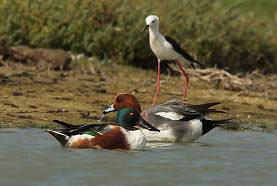
Shape and Size
When attempting to identify unknown birds, it is important to first observe and study the birds’ shape and size. The combination of these features indicates to which bird families or groups they belong- e.g. ducks, egrets, hawks, parakeets, bulbuls, babblers, etc. Once an unknown bird is identified into a family or group, then it will be easier to identify its species within members of that family or group with use of colour patterns and other important features.
Another method to apply for identification, especially with regard to the size of a bird, is the comparison of the subject under observation, with a common bird. Make use of birds you are familiar with – e.g. House Crow, Feral Pigeon, Red-vented Bulbul, House Sparrow, etc. when writing down your notes in relation to the bird you are observing.
Colour
The colour pattern of a bird plays a vital role in correctly identifying its species, after it has been recognized and placed into a family or a group. The main colour scheme and other markings in a bird’s plumage form the overall colour pattern that is useful in its identification. However, placing too much reliance on the colour of a bird without considering the surrounding natural conditions, can lead to pitfalls. Colour, though diagnostic, can be misleading under different lighting conditions. In strong sunlight, colours are seen either paler or darker depending on the angle of falling light, than when they are viewed in normal good light. In the extreme shade or in gloomy conditions, a bird’s colours could also appear in darker shades. Birds that possess an iridescent sheen to their feathers become evident and look brighter when good light falls directly on them, while the iridescent sheens are lost and the plumage looks dull in poor light.
Flight
Flight patterns are another aid to identification. G.M. Henry, that dedicated British naturalist who considered Ceylon (as it then was), his home, describes the flight of woodpeckers in his renowned book- “A Guide to the Birds of Ceylon” as “…..bounding undulations, owing to the alternate fluttering and closing of the wings”. He describes the flight of the Brown-headed Barbet as “….very direct in a series of big bounds, alternately fluttering and sailing with outspread wings.” A bird’s flight could be powerful and swift as in the case of a pigeon or heavy and laboured as in the case of the Lesser Adjutant.
Learn to recognize the different flight patterns of bird families. These are distinctive and will assist you in arriving at a positive conclusion in identification.
Jizz of a bird
The “jizz” (derived from the US Air Force term “General Impression and Shape” or GIS) of a bird is important when identifying its family/group or even its species, especially when the bird’s colour features are not seen well due to distance, atypical light conditions, etc.
The jizz of a particular bird can be just a single distinct feature such as its overall body shape, shape of a part of the body, a distinct behaviour, flight pattern, etc.; it can also be a combination of two or more features such as size and/or main body colour (which could be discerned poorly at the situation) with the above mentioned feature/s. Ask yourself- does the head look like that of a pigeon or like that of a cuckoo? Does it walk jauntily like a mynah or does it hop about like a babbler when feeding on the ground? These are features that must be addressed when identifying difficult species.
The location of the bird is also part of its jizz. A bird‘s general behaviour and stance is characteristic and can provide many indicators as to the species being observed- e.g. does it rush along the shore towards the edge of a wave and then rush back like a Sanderling or does it walk more slowly on the beach, shores and lake beds like a Lesser Sand Plover?
FURTHER AIDS TO IDENTIFICATION
Bird sounds
Another important aid to identification is the sound of a bird. If you familiarize yourself with a bird’s vocal sounds (calls and songs), you will be able to arrive at an accurate conclusion even without actually seeing it. A bird’s vocal sounds are unique to it, though some birds mimic the sounds of other birds as in the case of a drongo in our home gardens mimicking the sound of a Shikra or chloropses (or leafbirds) mimicking the sounds of a number of other birds. Therefore identifying a calling bird solely on its sound can be tricky at times especially when a birdwatcher is not well experienced in bird sound identification. Locating and observing the calling bird would not only clarify its identity but also further ones knowledge of bird sound identification.
Learning and memorizing bird sounds in the field is usually a long term and rather difficult task, but nevertheless it can be turned into a fascinating and challenging part of birding. Regular use of the publications on Sri Lankan bird sounds (audio cassettes, CDs and CD-ROMs) would help to accelerate the task. A Dictaphone/sound recording device used in the field to record bird sounds will not only greatly assist you as a memory aid but also provide an opportunity to compare unknown sounds together with those featured in the publications for identification.
Photographic Records
If you possess a good camera (even a small one), take a photograph and show it to an expert for identification. A photograph as a record shot is better than no photograph at all.
IDENTIFICATION CHALLENGES
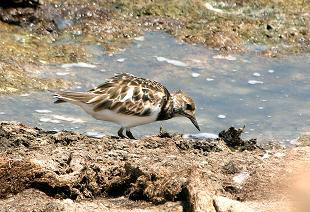
Certain birds prove quite a challenge even to the serious birder. The migrant waders that arrive in Sri Lanka in August/September and depart in April the following year, sport their wintering (non-breeding) plumage on arrival. Their distinctive breeding colours have disappeared and they are generally dull and poorly marked when compared with their breeding plumage.
Another group of birds that can pose problems in identification is the diurnal raptors. These birds are very variable and occur in different colour phases and morphs. To add to the confusion, the juveniles are quite differently coloured and marked when compared with the adult bird
In the case of certain groups of birds in the warbler family such as the Phylloscopus warblers (leaf warblers), the presence or absence of wing bars- (if present then how many - one or two)? formation of the eye stripe and the supercilium (eyebrow), together with the size and accurate colours of every plumage part (the colours indicate the condition of plumage, i.e. worn or fresh; it is dull in the former and bright in the latter) of the bird, are all very important in solving its correct identification.

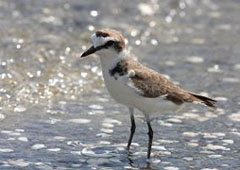
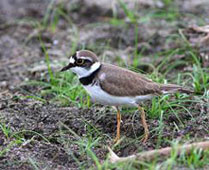
BINOCULARS AND SPOTTING SCOPES FOR BIRDWATCHING
Good optics are a must for the serious birder. Bins which are not too heavy are best as the higher the degree of magnification (8x, 10x), the greater the magnification of the tremors/vibrations of your hand.
 The first figure refers to magnification- e.g. in an 8x42 binocular, the bird will appear 8 times closer while the second figure (42 in the example), is the diameter of the objective lens in millimeters. The larger the objective lens, the brighter the image. Bins come in two designs- Porro Prism and Roof Prism. They also can be standard sized or compact. Compact models are light and therefore easy to carry around but their small objective lenses may not allow dim light viewing as efficiently as the larger models. Roof Prism bins are becoming more popular as they are lighter and more compact than Porro Prism bins. Good technology is important, so settle for a well known brand. In the tropics fungus is a problem. Therefore waterproof, Nitrogen filled instruments are preferable. At any rate optics should be stored in some form of desiccator when not in use.
The first figure refers to magnification- e.g. in an 8x42 binocular, the bird will appear 8 times closer while the second figure (42 in the example), is the diameter of the objective lens in millimeters. The larger the objective lens, the brighter the image. Bins come in two designs- Porro Prism and Roof Prism. They also can be standard sized or compact. Compact models are light and therefore easy to carry around but their small objective lenses may not allow dim light viewing as efficiently as the larger models. Roof Prism bins are becoming more popular as they are lighter and more compact than Porro Prism bins. Good technology is important, so settle for a well known brand. In the tropics fungus is a problem. Therefore waterproof, Nitrogen filled instruments are preferable. At any rate optics should be stored in some form of desiccator when not in use.
Spotting scopes come in very handy when observing birds such as waders, gulls and terns which are far away from the point of observation- e.g. on the shore, sand spit or sand bar out at sea. You could scan a large area with ease through a spotting scope and make detailed observations which would not be possible through bins. However, you should have strong shoulders to carry the tripod on which the spotting scope needs to be positioned.
BIRD BOOKS
If you are serious about the study of the birds of Sri Lanka, you should possess a reliable field guide as well as some good reference books on the birds of Sri Lanka as well as the region.
The identification guides on Sri Lankan birds listed below, are those with overall high accuracy in both text and illustrations which will enable users to identify the species accurately without any confusion.
Books on Sri Lankan Birds
- G.M. Henry’s “A Guide to the Birds of Ceylon”- third edition published by KVG De Silva and Sons Kandy by arrangement with Oxford University Press in 1998, is still the most favoured book on the birds of this country. Although the colour plates of the third edition have suffered somewhat due to poor quality printing, it still remains one of the best reference books as the author provides the reader with a wealth of observations which are lacking in modern field guides. Field guides are portable and a well illustrated guide is indeed useful while in the field but lacks detailed observations as to a bird’s intimate behaviour such as courtship, rearing of its young, etc. If you are fortunate to posses either the first or even the second edition of Henry’s “Guide”, treasure it as it is priceless. The third edition, revised by Thilo W. Hoffman, Deepal Warakagoda and Upali Ekanayake contains updates of new birds sighted in the “post Henry” era, up to 1998. Furthermore, some birds, it is noted, have widened their territories. Certain birds found in the dry zone during Henry’s era, have now made inroads into the low country wet zone as in the case of the Black-winged Stilt when breeding pairs with young were recently discovered in Talangama.
- A Field Guide to the Birds of Sri Lanka- Oxford University Press Inc. New York. 1999, text by John Harrison with illustrations by Tim Worfolk is by far the best field guide published to date on our birds. It is a good book to carry on field trips. The illustrations, particularly of the raptors and waders are accurate and will assist in the identification of these families.
- A Photographic Guide to the Birds of Sri Lanka- New Holland Publishers (UK) Ltd. 2000 with subsequent reprints, is authored by Gehan De Silva Wijeyeratne and Deepal Warakagoda with photographs by Dr. T.S.U. De Zylva. It is an excellent guide book especially for newcomers to bird watching and a useful companion guide to other bird books. Due to its compact size and format, it is easy to carry and refer to in the field. The images are sharp and bright and the text informative. However as it illustrates only 252 of the country’s 439 species, it is not exhaustive. There is a pressing need for a good photographic guide to all the birds recorded in Si Lanka.
Regional Guides
Sri Lanka falls within the tropical South Asian region and there is a wealth of good regional guides to choose from.
Some of these guides are-
- Birds of South Asia by Pamela Rasmussen and John Anderton published by the Smithsonian Institution and Lynx Edicions. 2005. This is the most up to date authentic handbook with a field guide on the regional birds including Sri Lankan birds.
- Birds of the Indian Subcontinent by Tim and Carol Inskipp and Richard Grimmet- published by Christopher Helm (Publishers) Ltd. 1998, is the best former handbook and still has its place in the study of regional birds including those of Sri Lanka.
- A Field Guide to the Birds of India, Sri Lanka, Pakistan, Nepal, Bhutan, Bangladesh and the Maldives by Krys Kazmierczak published by OM Book Service 2000 (Asian millennium edition. The UK edition is published by Pica Press) is yet another valuable guide.
These books are a useful addition to the library of a keen observer of birds of the South Asian region.
FINAL WORDS OF CAUTION
In conclusion, a few words of caution. Do not expect to put a name to each and every bird that you encounter in the field while birding. There may be instances where some birds are not seen well enough to gather all the features necessary to correctly identify them. In such instances, do not attempt guesswork on identification; it is better to leave them as unidentified birds rather than just incorrectly naming the birds. Disseminating erroneous reports of misidentified birds causes serious damage to the country’s study of ornithology. Therefore omitting sightings with doubtful identifications is highly advised.
Furthermore, do not place too much reliance on the reports of the casual observer. The casual observer, though enthusiastic, does not have the expertise to make a positive identification.
A case in point was when the Serendib Scops Owl, a new endemic for Sri Lanka, was discovered by Deepal Warakagoda. This historic discovery created a sensation. Consequently, many articles and photographs appeared in the local Press. Someone who had seen these images informed a friend that the bird in question was found on his premises. These premises were well wooded therefore it was possible that an owl could be found there. A few birders rushed to the scene only to discover that the bird in question was an Indian Pitta! How a pitta could be confused with an owl is beyond comprehension! This is why it is best not to be influenced or guided by the casual observer who though well meaning, could cause much confusion in the birding world!